Who could possibly forget the January 3-4, 2022 snow/ice storm that left Sen. Tim Kaine stuck in his car for 26+ hours, and that also stranded many other Virginia motorists in hazardous, nasty conditions? Well, now we have a thorough “after-action report” of the incident, conducted by the CNA Institute for Public Research, which explains:
“The Virginia Department of Emergency Management (VDEM), Virginia Department of Transportation (VDOT), and Virginia State Police (VSP) asked CNA to develop an after-action report (AAR) for the January 3–4, 2022, winter weather event including the Interstate 95 (I-95) incident. First, we must clarify what an AAR is not. It is not an investigation or a search for a person or entity upon which to lay blame. After almost 80 years of analyzing critical incidents for the U.S. Navy and for local, state, and federal government agencies, CNA has learned that responses to multi-faceted and multi-layered incidents are, in a word, complex. In our collective experience, we have never seen an example when one moment—or one person—was solely responsible for what happened during the response to an incident. Without exception, we have found that negative cascading effects during response operations stem from multiple issues with plans, procedures, policies, and preparedness (including training and exercises), not from the actions of individuals or even one organization.”
See below for some highlights from the report, but the bottom line is that:
- “The January 3 winter storm turned out to be the largest snowfall in the area in the last six years; however, temperatures on Sunday, January 2 reached the mid-60s across the commonwealth.”
- “The warm weather may have lessened public attention to the numerous VDOT, VSP, and VDEM messages and travel warnings leading up to January 3 “
- “…travelers coming back from winter breaks took to the roads in force, with many out-of-state travelers joining Virginians on the road. As a result, the traffic volumes on I-95 around Fredericksburg on January 2 into early January 3 (before the snow) were on average 65 percent higher than on the same days in 2019. “
- “In addition to the volume of traffic, the area has steep, long hills (climbing northbound) that frequently slow down trucks. Multiple work zone barriers block shoulders, which affected snow removal by reducing the shoulder areas where snow could otherwise be pushed. “
- “VDOT districts were appropriately mobilized based on the weather forecast. Snowplow operations gradually fell behind as conditions worsened and downed trees and power lines blocked roadways. Wreckers stopped responding to the interstate when day-shift drivers timed out of their eligibility and trucking companies would not send additional resources to gridlocked areas.”
- “There were no viable alternate routes between Richmond and Washington D.C., as secondary roads were also impeded/unpassable/limited due to snow, fallen trees, and downed power lines. Until late in the evening on Monday, January 3, traffic was still moving, and VSP and VDOT still considered keeping I-95 moving (no matter how slowly) their primary mission.”
- “State agencies collectively lost situational awareness and could not verify the extent and locations of the blockages on I-95 as the queue built throughout the day and into the overnight hours. This loss occurred when traditional methods of information gathering broke down and alternatives methods were also unsuccessful.”
- “VSP and VDOT personnel in the field did conduct wellness checks to the extent possible, but their primary mission was to get traffic moving.”
• “Localities opened shelters and warming stations on Tuesday, January 4, but there was no way for immobile drivers to get to them until the interstate was cleared. Virginia National Guard needs 12 – 24 hours to mobilize and deploy personnel, and therefore would not have been able to provide direct assistance to stranded motorists.”
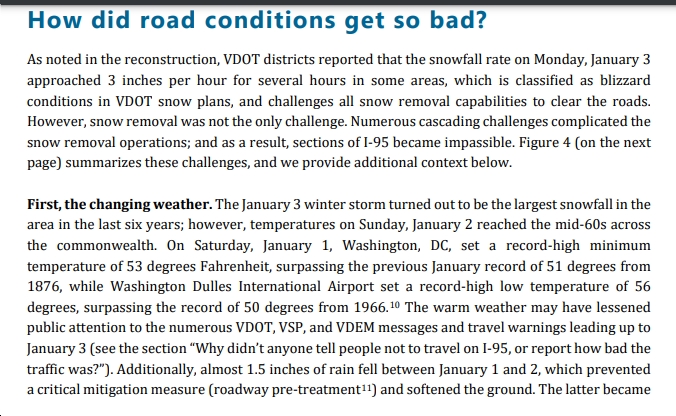
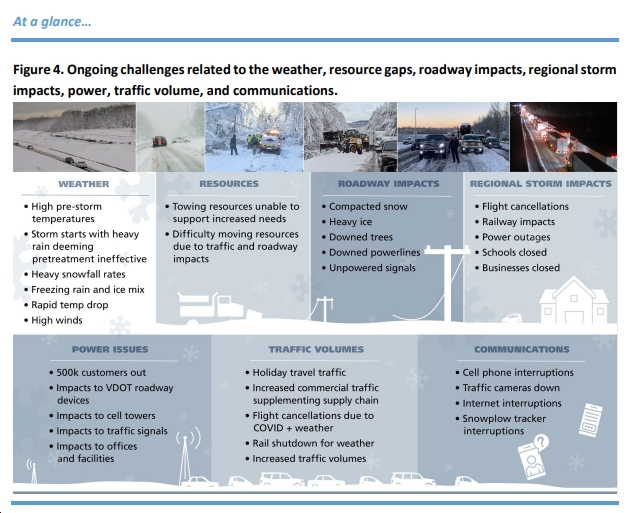
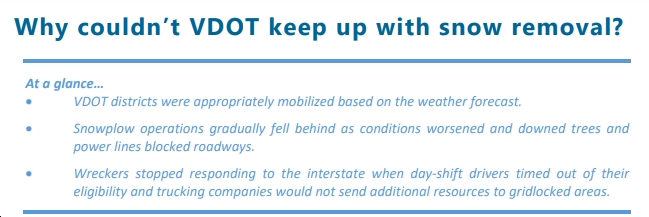
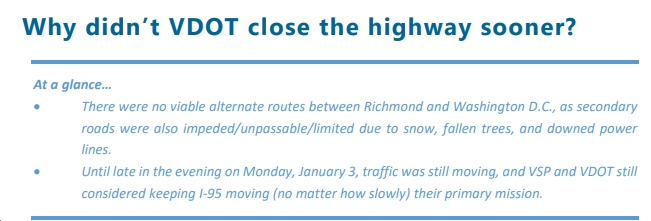
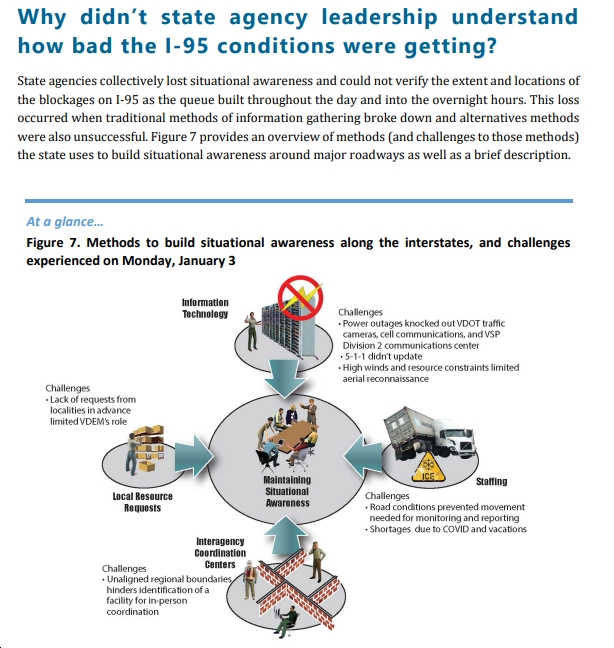
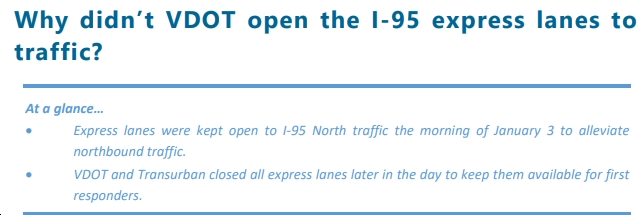
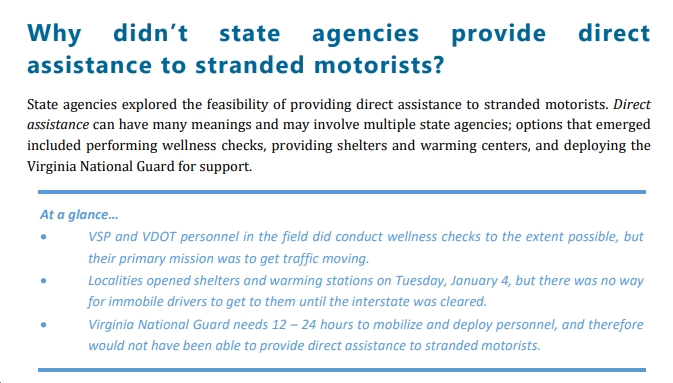
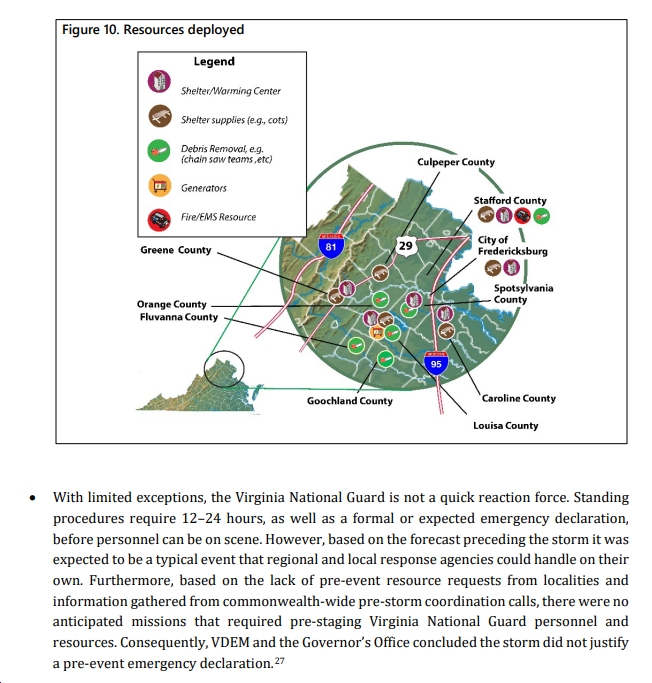
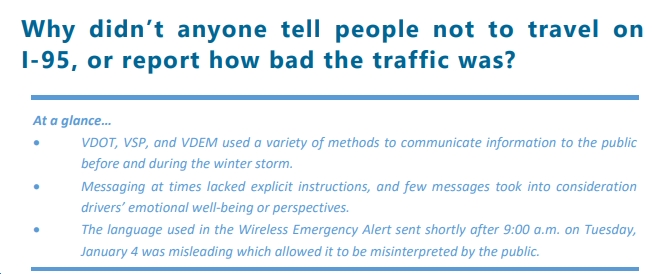




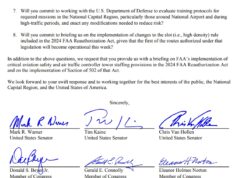
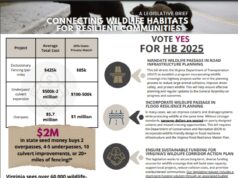






![[UPDATED 1/6/26] Several Upcoming Virginia Special Elections in January – for SD15, HD77, HD11, HD23, HD17; Also a Dem “Firehouse Primary” for Fairfax County School Board (Braddock District)](https://bluevirginia.us/wp-content/uploads/2026/01/montagespecialelections010226-100x75.jpg)
![Video: Sen. Tim Kaine “commemorate[s] the fifth anniversary of the January 6, 2021, attack on the U.S. Capitol that led to the tragic death of five law enforcement officers from Virginia”](https://bluevirginia.us/wp-content/uploads/2026/01/kainejan6-100x75.jpg)
